| Author |
Messages |
Martin Hill
Sergeant


Gender: Male
Location: UK
Registered: Apr 2010
Status: Offline
Posts: 35
|
      
 Posted Tuesday, August 14, 2012 @ 01:09 PM Posted Tuesday, August 14, 2012 @ 01:09 PM
On my RF5 I have the thin FBW glass outriggers. When I got the plane it had Rhombus wheels fitted and they wear quite well.
The problem with these wheels/outriggers is they have a rather narrow hub (35mm).
I received some new Rhombus R080 wheels a little while ago but am horrified they only last about 15 landings.
What is noticeable is that the hubs on these new wheels is a larger diameter and the rubber seems softer.
What appears to be happening is - particularly on asphalt and concrete - the rubber breaks off on lumps and the hub rims shear off.
I might have found some other makes of rubber wheels - but has anyone got a good reason why solid nylon wheels can't be used?
--------------------
RF5 #5107 G-BEVO
|
Donald
Command Sergeant Major

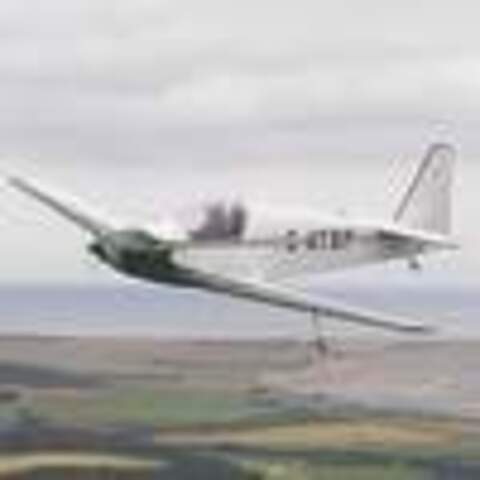
Gender: Male
Location: Scotland
Registered: Jan 2007
Status: Offline
Posts: 489
|
      
 Posted Tuesday, August 14, 2012 @ 03:47 PM Posted Tuesday, August 14, 2012 @ 03:47 PM
OK, it's not a 5, but 4 years ago I decided it was time to renew/replace the outrigger wheels on my RF3 and after trawling the internet bought a pair of Micro Scooter wheels. These are 100mm diameter and slender enough that I could fabricate a simple wrap-around fork to go on the end of the 25mm nylon rod legs. They also come furnished with rather nice little ball races. 4 years down the line they are still in good condition and I'd have no qualms about doing the same again.
I got them here: http://www.skatehut.co.uk/scooters/wheels/jd_bug_original_100mm_wheels.htm for the princely sum of £11.44 inclusive of shipping.
[Edit by Donald on Tuesday, August 14, 2012 @ 04:14 PM]
|
Jorgen
Captain

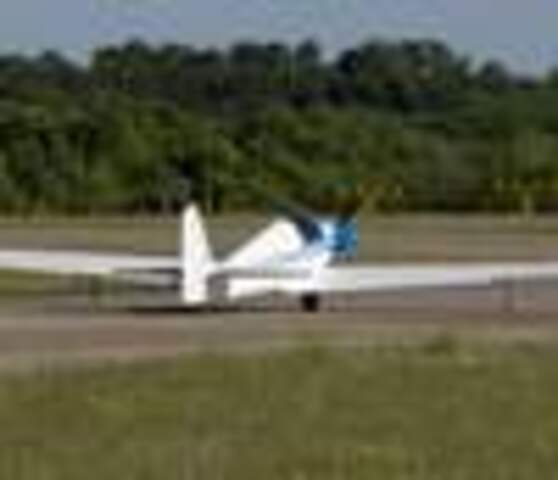
Gender: Male
Location: Lund, Sweden
Registered: Apr 2007
Status: Offline
Posts: 836
|
      
 Posted Tuesday, August 14, 2012 @ 05:22 PM Posted Tuesday, August 14, 2012 @ 05:22 PM
Hi Martin,
I concur with Donald- make a fork for inline-type wheels and a new world of wheels + bearings/sealed races opens up for you. Those are available everywhere, cheap and very durable. I use inline wheels for the RF 4 and 120 mm scooter wheels for the 5b. Last time I upgraded my RF 4 outrigger wheels the guy at the skateshop gave me two wheels + bearings for free when I told him what I would be using them for!
May the 4's be with you/ Jörgen
|
D. Porter
Sergeant First Class

Gender: Male
Location: Ventura, CA
Registered: Apr 2012
Status: Offline
Posts: 84
|
      
 Posted Tuesday, August 14, 2012 @ 06:30 PM Posted Tuesday, August 14, 2012 @ 06:30 PM
Not sure if this will help anyone, but my RF4D uses this wheel on the original wire outrigger: http://www.mcmaster.com/#catalog/118/1358/=iumi66 P/N 8823T32
"Quick-Turn Orange Polyurethane-Tread Wheel 3" X 1", 5/16" Axle, Ball Bearing, 230# Capacity" $22ea.
In my limited experience they appear to be very durable and high quality wheels.
Don
|
Martin Hill
Sergeant


Gender: Male
Location: UK
Registered: Apr 2010
Status: Offline
Posts: 35
|
      
 Posted Friday, August 24, 2012 @ 01:49 PM Posted Friday, August 24, 2012 @ 01:49 PM
Thanks all of you. I guess you answered two questions. Nylon wheels and skate wheels are OK.
I did wonder about skate wheels i.e. whether they might take the weight. I fitted some to a glider tip some years ago and they were fine. Still wondering why the tyres on the wheels I have got shredded so quickly. It may be that because the wheels actually castor on the FBW outriggers that they are shimmying. Anyway I will give nylon wheels a go.
--------------------
RF5 #5107 G-BEVO
|
JamesB
First Sergeant

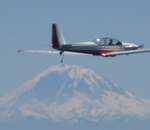
Gender: Male
Location: Near Seattle, WA; USA
Registered: Oct 2006
Status: Offline
Posts: 257
|
      
 Posted Sunday, August 26, 2012 @ 09:49 AM Posted Sunday, August 26, 2012 @ 09:49 AM
When I first got my RF 5B, it seemed to me that the wheels tended to slam into irregularities rather than roll over them. When it came time to replace them, I found the largest diameter, pliant, ball bearing wheels I could find that would fit the original axel and housing. I've been very pleased with them and even ordered an extra pair for spares. Pics and details on rf5b.com in improvements section.
|
Donald
Command Sergeant Major


Gender: Male
Location: Scotland
Registered: Jan 2007
Status: Offline
Posts: 489
|
      
 Posted Monday, August 27, 2012 @ 07:03 AM Posted Monday, August 27, 2012 @ 07:03 AM
I wanted to post a picture of mine in my earlier post but for a variety of reasons, couldn't. Here's one now complete with mud splatters. 
|
Bob Grimstead
Captain


Gender: Male
Location: Perth, Western Australia or West Sussex, England
Registered: Dec 2006
Status: Offline
Posts: 2043
|
      
 Posted Tuesday, August 28, 2012 @ 11:02 AM Posted Tuesday, August 28, 2012 @ 11:02 AM
Hi Guys,
Two weeks ago I fitted a similar micro-scooter wheel as a tailwheel.
The shop where I bought them said it is good for 100kg and 30mph, which should be fine.
I have so far flown I think five or six landings with no apparent wear or other ill effects.
Because it is skinny compared to the original (which was DEAD!) it digs in on landing, which saves the brake, and it also seems to steer better on grass. Plus of course, being thinner there should be less drag in the air ;-)
If I find I have problems, I will let everybody know.
Yours, Bob
--------------------
Flying and displaying Fournier RF4Ds VH-HDO and G-AWGN, building replica RF6B G-RFGB and custodian of RF6B prototype F-BPXV
|
jb92563
Second Lieutenant

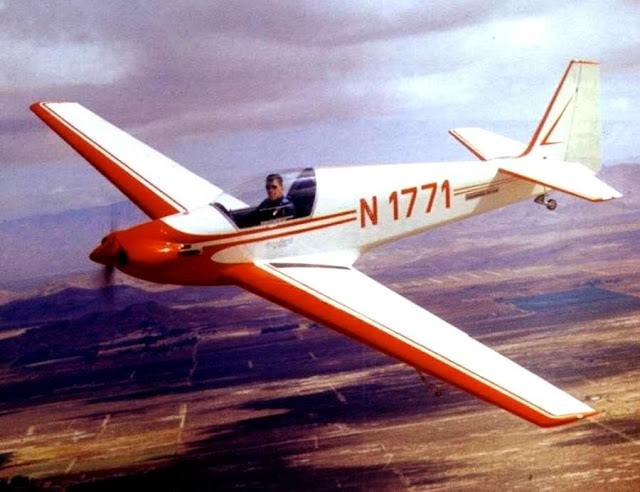
Gender: Male
Location: Lake Elsinore, CA, USA
Registered: Mar 2007
Status: Offline
Posts: 583
|
      
 Posted Thursday, August 30, 2012 @ 01:31 PM Posted Thursday, August 30, 2012 @ 01:31 PM
| Quote: |  | | Originally posted by Bob Grimstead
Hi Guys,
Two weeks ago I fitted a similar micro-scooter wheel as a tailwheel.
The shop where I bought them said it is good for 100kg and 30mph, which should be fine.
I have so far flown I think five or six landings with no apparent wear or other ill effects.
Because it is skinny compared to the original (which was DEAD!) it digs in on landing, which saves the brake, and it also seems to steer better on grass. Plus of course, being thinner there should be less drag in the air ;-)
If I find I have problems, I will let everybody know.
Yours, Bob
|
|
I had done the same on a glider and used one of the larger diameter hard plastic scooter wheels and to get it to dig in less I put it in the lathe and made the bottom flat.
Now there is less dragging in softer sand and sod making ground handling much easier.
--------------------
Ray
RF4D #4057 N-1771 Rectimo 1400cc
http://picasaweb.google.com/jb92563/FournierRF4D
http://www.touringmotorgliders.org
|
Bob Grimstead
Captain


Gender: Male
Location: Perth, Western Australia or West Sussex, England
Registered: Dec 2006
Status: Offline
Posts: 2043
|
      
 Posted Monday, September 3, 2012 @ 11:40 AM Posted Monday, September 3, 2012 @ 11:40 AM
Thanks Ray, I might try that myself.
Yours, Bob
--------------------
Flying and displaying Fournier RF4Ds VH-HDO and G-AWGN, building replica RF6B G-RFGB and custodian of RF6B prototype F-BPXV
|
dannparks
Sergeant Major


Gender: Male
Location: Parkside Airpark, Battle Ground, WA
Registered: Oct 2006
Status: Offline
Posts: 391
|
      
 Posted Monday, September 3, 2012 @ 03:56 PM Posted Monday, September 3, 2012 @ 03:56 PM
Donald, I love the bracket conecting your outrigger wheel to the nylon rod. Super simple, light, and not to critical about the diameter of the rod. Are those through bolts or screws mounting it? Did they come when you got the plane or did you acquire/make them?
--------------------
Dann Parks • RF4D #4051 N2188 • now flying!
Pictures at: https://picasaweb.google.com/111628310900713778468/RF4D_N2188?noredirect=1
|
Donald
Command Sergeant Major


Gender: Male
Location: Scotland
Registered: Jan 2007
Status: Offline
Posts: 489
|
      
 Posted Tuesday, September 4, 2012 @ 03:46 AM Posted Tuesday, September 4, 2012 @ 03:46 AM
Thanks Dann.
Here is a poor shot of the old forks which came with the aircraft in 1996. They were old back then and the wheels were pretty shot:

When I switched to scooter wheels I needed something new. So being a lazy guy with no welding skills or equipment I went for a simple wrapped plate though I retained an approximation of the trail geometry of the old forks.
It would probably have been a smart move to cut and fold the bracket before drilling the holes but I wasn't being smart that day and cut and drilled the lot before wrapping the plate. But I was lucky for everything lined up nicely after the wrap.
As the width of the scooter wheel is a little under the diameter of the 25mm nylon rod there's a washer lead soldered to each of the inside faces to take up the gap. The screws are Pan Head machine screws that go right through with a nyloc nut and washer on the other side. Stainless steel from my local marina shop.
You can't see it in the picture but the bottom rear of the nylon rod has has an angled flat planed off to clear the wheel.
They've been on the plane about 4 years now and have given no trouble and, I think, look quite tidy.
[Edit by Donald on Tuesday, September 4, 2012 @ 03:47 AM]
|
D. Porter
Sergeant First Class

Gender: Male
Location: Ventura, CA
Registered: Apr 2012
Status: Offline
Posts: 84
|
      
 Posted Tuesday, September 4, 2012 @ 03:45 PM Posted Tuesday, September 4, 2012 @ 03:45 PM
I still have the original loop style outriggers on 1700F, and have found them completely satisfactory, at least on smooth pavement. Seems like most of the other RF4's have been upgraded to a single strut style outrigger, and I'm wondering why. Is there something about the wire loop outrigger that I should be aware of that could become a problem?
|
Markku
Master Sergeant

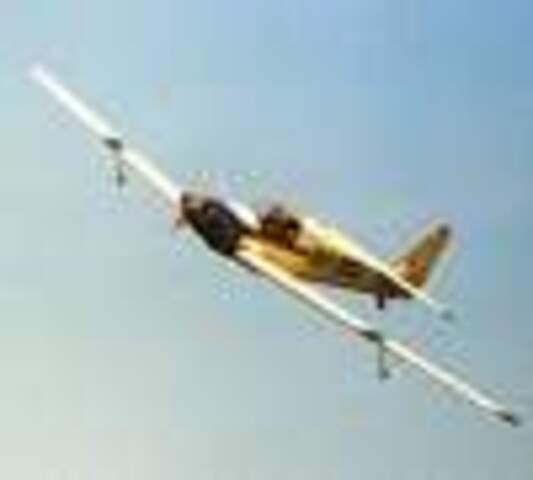
Gender: Male
Location: Kouvola, Finland, EFWB
Registered: Oct 2006
Status: Offline
Posts: 167
|
      
 Posted Thursday, September 6, 2012 @ 08:05 AM Posted Thursday, September 6, 2012 @ 08:05 AM
We have operated our 4:s also with wire type outriggers without any big problems, works also in a grass field
|